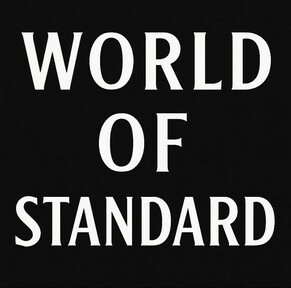Kristina Milivojević, advisor and analyst, auditor: Long drought periods drive up inflation.
01.07.2025*Kristina is an external collaborator of StandardPrva and the owner of her own consulting firm Eksperta
Food inflation in Bosnia and Herzegovina remains persistent throughout 2024 and 2025, and one of the key reasons are extreme weather conditions – especially long drought periods affecting domestic agriculture. After a wave of price increases caused by global factors (such as rising energy prices and disruptions due to the war in Ukraine), B&H is also facing climatic challenges that reduce yields and drive food prices upward. Drought in 2024 caused significant damage to grain, fruit, and vegetable harvests, and experts warned even then that a poor agricultural season would inevitably impact the prices of basic food products. A similar trend continues into summer 2025 – due to extremely high temperatures (up to 41 °C, with an orange weather alert), agriculture is again on its knees, plants are dropping fruit to “save” the tree, and some crops are literally rotting in the ground. Representatives of farmers warn that if rain does not come soon, shortages of certain domestic products and further price increases in food on the market may occur. We have already seen that some orchards and crops this year suffered a combined blow from late frosts (which disrupted pollination) and later drought, leading to significantly lower yields – e.g., plum and cherry yields have drastically underperformed, and the few fruits that did grow are dropping prematurely due to heat. Thus, weaker domestic food supply puts pressure on the market and opens the door to more expensive imports.
A direct consequence of prolonged drought periods is a drop in production in key agricultural sectors. For example, during one of the record droughts in 2022, yields of certain crops (such as corn) were as much as 80% lower than expected, causing panic among farmers. Warnings were already coming “from all parts of B&H” that domestic food would not be available, and that the little that was available would be expensive. Unfortunately, these bleak predictions are coming true: livestock is also suffering because there is not enough cheap animal feed – corn and hay yields have drastically decreased, and farmers are barely providing feed for livestock. This year many have managed to cut grass only once, whereas previously they had three mowings; the land is so dry that it cracks underfoot. Lack of animal feed and rising concentrate prices are already creating problems that could spill over into meat and dairy prices. Milk, meat, fruit, vegetables – all of these products are becoming more expensive when domestic production fails, because it is necessary to resort to imports or limited reserves.
However, drought is only a trigger that exacerbates existing weaknesses in B&H’s agrarian sector. Structural problems mean that the effects of weather disasters here are more pronounced than in more developed countries. First of all, domestic food production covers a relatively small part of consumption – farmers estimate that B&H meets only 20–30% of its own needs, while the rest relies on imports. Farmers openly admit: “We do not dictate the price of agricultural products here in B&H, we are not big producers… Prices are dictated by import lobbies. They should be struck; they are to blame for all high prices,” says a farmer from Tuzla Canton. In other words, when the domestic harvest fails, importers and traders take control of the market and often form higher margins. The Institution of the Ombudsman for Consumer Protection of B&H confirmed at the end of 2024 that traders and hospitality businesses took advantage of the situation – global food prices are now 20% lower than three years ago, while in B&H they are 50–200% higher than they were three years ago. This gap implies that part of the price increases cannot be explained solely by more expensive inputs, but also by local market behaviors (such as high trade margins and weak control thereof). Attempts by entity governments to limit margins on basic products in recent years have not yielded significant results.
Also, institutional support for agriculture in B&H is chronically lagging. Subsidies and incentives are low and unsystematic – as agricultural associations point out, B&H has some of the lowest agrarian incentives in the region. Moreover, incentive payments are often delayed: the fourth quarter of 2024 was paid only in mid‑2025, while farmers needed that money in March and April for spring sowing. Such delays force producers to take out loans to buy seeds, fertilizer, and fuel, which increases production costs and reduces competitiveness. Many warn that if the trend continues, more and more farmers will give up production. We are already witnessing protests – e.g., a group of grain growers in Semberija recently blocked the road at Rača, unhappy with the low purchase price of wheat, which does not cover even basic production costs. They claim that buyers (millers and traders) are importing cheap wheat and keeping silos half-empty until they force domestic farmers (burdened with loans) to sell their grain at a pittance. All this suggests that without more serious support measures and protection, domestic agriculture remains exposed to both climate risks and market manipulation.
How much long drought periods have really driven food inflation is best shown by the numbers. According to data from the Agency for Statistics of B&H, annual inflation at the beginning of 2025 was around 3%, but food and non‑alcoholic beverages increased by as much as 7.8% compared to March 2024 – a continuation of the trend of continuous growth in basic food prices. Thus, although the general consumer price index stabilized somewhat after a record 14% inflation in 2022 (inflation fell below 2% in October 2023 thanks to cheaper fuel and electricity), food continues to become more expensive faster than other categories. This is confirmed by consumer baskets – citizens are spending a larger portion of their income on food. Inflationary pressures on food in late 2024 and early 2025 were renewed not only due to drought but also due to other factors, such as the minimum wage increase. In the Federation of B&H, the minimum wage jumped to 1,000 KM (60% more than before) from January 2025, which immediately caused a certain cost shock – prices in January 2025 rose by 1.1% month‑on‑month (3.3% more than in January 2024). Still, experts emphasize that the share of wage growth in overall inflation is small; a much greater impact is made by food price increases due to climatic and market disruptions, and rising prices of imported raw materials. Economic analyst Igor Gavran notes that recent food price spikes are the result of a combination of weather (mis)fortunes and disruptions in global markets. An example is the current conflict in one of the world’s largest agricultural regions (the conflict between India and Pakistan over water supply) that could impact global grain supply. On the other hand, the global market somewhat stabilized last year: the FAO Food Price Index in April 2025 was nearly 20% lower than its peak in March 2022, thanks to better supplies of grains and edible oils. But those reliefs did not proportionately translate to B&H – as mentioned, traders maintained high prices here even as global prices fell. Ultimately, final consumers in B&H did not feel much of a drop in global prices, but mostly feel rising domestic margins and production costs.
For broader context, it is useful to compare the situation in B&H with the European Union and the United Kingdom. Food inflation in the EU during 2022 reached double‑digit rates (due to rising energy prices and effects of the war in Ukraine), but slowed significantly by 2024/25. The average food price increase in the EU in spring 2025 is around 3–4% year‑on‑year, which is noticeably lower than in B&H. For example, the eurozone recorded annual food inflation (including alcohol and tobacco) of around 3.1% in May 2025, with total inflation at only 1.9% – practically at the European Central Bank’s target. In the UK it also calmed down: after British food inflation exceeded 15% year‑on‑year during 2023, in April 2025 it dropped to 2.6% (the highest increase in the last 11 months, but far below earlier records). These data show that richer economies managed to curb food price increases faster than B&H. The reasons for this are multiple: larger subsidies and reserves – the EU allocates huge funds for the agricultural sector (almost 40% of the EU budget goes to agricultural incentives, which is unimaginable in our conditions), thus mitigating the impact of drought or floods on production. Also, European agriculture is mostly highly industrialized and diversified, while our producers are fragmented and less competitive. When a disruption occurs (whether climatic or market), EU countries can more easily activate protection mechanisms – from strategic commodity reserves to export restrictions – to stabilize domestic prices. In B&H such mechanisms either do not exist sufficiently, or are not effective. For example, only sporadic announcements are made of short‑term measures such as freezing prices for a limited number of products or increased inspection oversight of traders, which does not solve the problem in the long term. At the same time, citizens of B&H have lower living standards and less capacity to absorb price increases, so the social effect of food inflation here is heavier than in an average EU member.
In conclusion, prolonged droughts have imposed themselves as a significant inflationary factor in Bosnia and Herzegovina during 2024 and 2025. When weather disasters destroy a significant part of the domestic harvest, a country like B&H – with a weak agrarian base and high dependence on imports – inevitably suffers food price increases. These increases are measured both in concrete numbers (almost 8% annual rise in food items) and in the decline of citizens’ living standards. Food inflation disproportionately affects the poorest segments of the population, pushing many into the risk of poverty and malnutrition, warn the United Nations. To mitigate these consequences, B&H will have to consider strategic measures: from investing in irrigation systems and climate‑resilient agriculture, to strengthening agricultural incentives and creating reserves of key foodstuffs. It is also necessary to ensure a more transparent market – prevent unjustified price hikes by intermediaries and import monopolies, so that the fall in global prices is visible on the shelves of our stores in the future. Inflation is partly imported, but much depends on ourselves: with appropriate agrarian policy and better risk management, long drought periods do not have to “raise inflation” year after year and burden household budgets of B&H citizens.
References:
Agency for Statistics of Bosnia and Herzegovina – Monthly Consumer Price Indices, 2024–2025.
Radio Free Europe – “As Drought Damages Are Tallied in BiH, Food Price Increase Seems Likely,” September 4, 2024.
Bloomberg Adria – Statistical and Analytical Review of Food Prices in BiH, 2024–2025.
Source.ba / Capital.ba – Field Reports on the Impact of Drought on Agriculture, June 2025.
Impulsportal – Report on the Consequences of the 2022 Drought on Farmers.
Reuters / BRC – Data on Slowing Food Inflation in the UK, April 2025.
Eurostat – Data on Food Inflation in the Eurozone, May–June 2025.
Nezavisne Novine – Analysis of Structural Problems in BiH's Food Market, 2015.
/ / /
"Standard Prva" LLC Bijeljina is a company registered in Bijeljina at the District Commercial Court in Bijeljina. Company’s activities are accountancy, repurchases of receivables, angel investing and other related services. Distressed debt is a part of the Group within which the company repurchases the receivables, which function and are not returned regularly.
Lawyer’s Office Stevanović is the leading lawyer’s office in the region with the seat in Bijeljina. The LO abbreviation represents Lawyer’s Office of Vesna Stevanović and Lawyer’s Office of Miloš Stevanović.
Contact for media press@advokati-stevanovic.com or via telephone 00 387 55 230 000 or 00387 55 22 4444.

.jpg)



